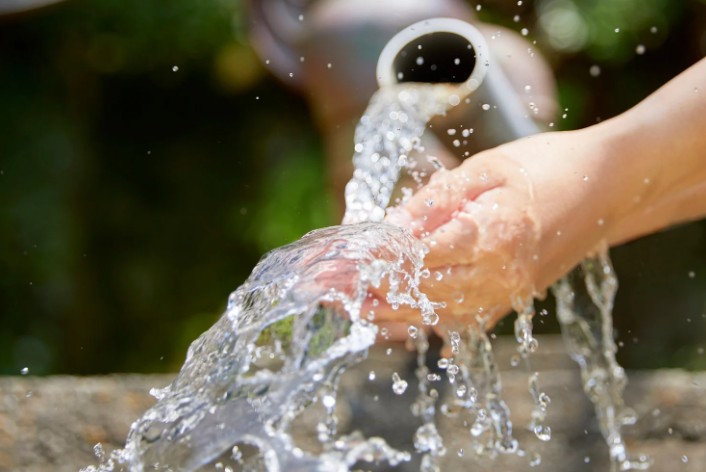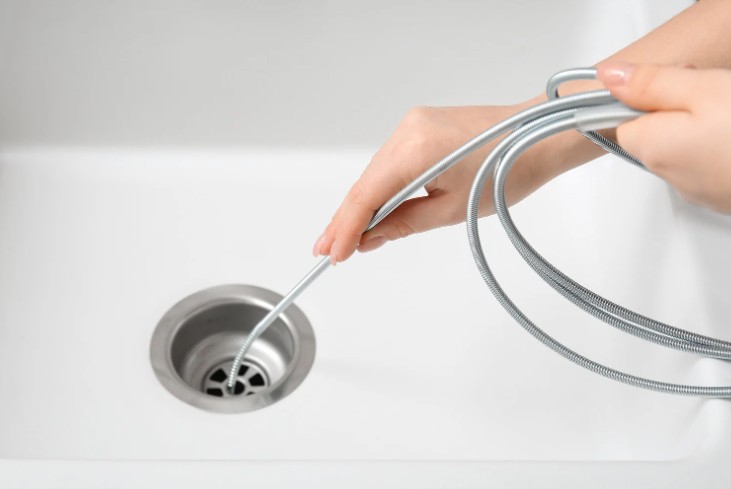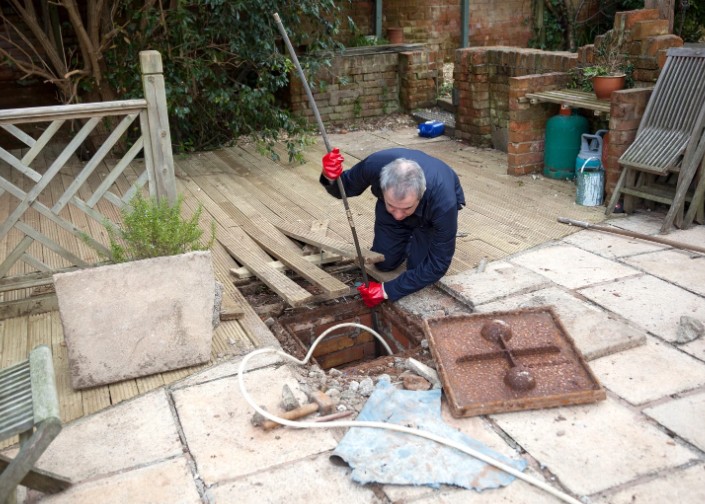- Why Do Outdoor Drains Get Blocked So Often?
- What Tools Do I Use to Unblock an Outdoor Drain?
- How to Unblock a Drain? The 6 Professional Methods I Use
- How Do I Stay Safe While Unblocking Drains?
- Comparison Table: DIY vs Professional Drain Unblocking
- What If the Drain Is Still Blocked After Trying Everything?
- How Do I Prevent Outdoor Drains from Blocking Again?
- Conclusion
- Frequently Asked Questions (FAQs) On How To Unblock a Drain
Outdoor drain blockages are one of those things I’ve dealt with more times than I can count. Whether it’s garden debris, mud, or years of grease buildup, knowing how to unblock a drain properly can save a lot of stress, money, and mess.
In this guide, I’ll walk you through six professional ways I use to tackle outdoor drain blockages, along with prevention tips and safety advice. So, if you’re struggling with a blocked drain outside your house, let’s get into it.
Why Do Outdoor Drains Get Blocked So Often?
What causes outside drains to clog?
In my experience, outdoor drains tend to get blocked due to a mix of natural debris and poor maintenance. Over time, this builds up and eventually stops water from flowing freely.
Common causes include:
- Fallen leaves and twigs
- Mud and silt washed in during rain
- Fat and grease from kitchen waste
- Hair and food scraps if external sinks drain here
- Tree roots infiltrating pipes
- Accidental disposal of plastics or non-degradable materials
How can you tell if an outdoor drain is blocked?
I usually spot a blockage when there’s water pooling around the drain cover or if a foul smell starts creeping up from the pipe.
In some cases, the water in sinks or outdoor taps starts draining slowly. A gurgling noise or bubbling when water tries to pass through is another clear warning sign that there’s an issue down below.

What Tools Do I Use to Unblock an Outdoor Drain?
Having the right tools makes a massive difference. Here’s what I personally keep handy depending on how severe the blockage is.
What are the Basic tools for minor blockages?
- Rubber gloves
- Bucket
- Garden trowel or scoop
- Drain unblocking rods
- Drain grate keys or flathead screwdriver
Professional tools for tougher blockages:
- High-pressure drain jetting machine
- CCTV camera for pipe inspection
- Wet/dry vacuum
- Enzyme-based drain cleaner
- Drain snake or auger
How to Unblock a Drain? The 6 Professional Methods I Use
Now, let’s dive into the methods I personally use to deal with outdoor drain blockages. Choose based on the type and severity of the clog.
1. Manual Clearance with Drain Rods
This is often my first go-to method for blockages near the surface.
Steps:
- Remove the drain cover using a key or flat tool.
- Wear gloves and use a scoop or hand to remove visible debris.
- Insert the drain rod and gently push it through the pipe.
- Twist clockwise until resistance reduces – this usually means the blockage has cleared.
- Flush with a bucket of water.
Best for: Leaves, silt, garden waste

2. Drain Jetting for Tough Blockages
Drain jetting is one of the most effective professional methods I use. It uses high-pressure water to break down grease and sludge.
Steps:
- Insert the jetting hose into the pipe.
- Turn on the water jet machine.
- Slowly feed the hose while maintaining pressure.
- Pull out and check if water flows freely.
Best for: Grease build-up, mud, sludge
3. Removing the Drain Cover and Cleaning the Gully
Sometimes, blockages are localised right at the top – in the gully trap.
Steps:
- Lift the manhole cover or gully grate.
- Scoop out all visible waste and clean thoroughly.
- Rinse the area using a hose or bucket.
- Replace the cover securely.
Best for: Surface-level obstructions
4. Natural Enzyme Cleaners (Eco-Friendly Option)
If I suspect the blockage is from organic material, enzyme cleaners are a gentle but effective method.
Steps:
- Pour the cleaner down the drain as per product instructions.
- Leave it to work overnight.
- Rinse with warm water the next day.
Best for: Organic matter, biodegradable waste
5. High-Pressure Hose Flush
When I don’t have a jetting machine handy, a garden hose with good pressure can sometimes do the trick.
Steps:
- Insert the hose into the drain.
- Wrap a cloth around the gap to prevent splash-back.
- Turn on the water and let it blast through.
Best for: Soft blockages, recent clogs

6. CCTV Drain Survey (When the Cause Is Unclear)
If I can’t figure out what’s causing the blockage or suspect deeper issues, a CCTV inspection is my final step before calling in the heavy-duty specialists.
What it helps detect:
- Roots in drain pipes
- Pipe collapse
- Fatbergs
- Structural damage
You’ll need a professional service for this unless you own the equipment.
How Do I Stay Safe While Unblocking Drains?
Working with drains isn’t just unpleasant — it can be risky. I always wear thick rubber gloves, waterproof boots, and protective goggles, especially when using jetting equipment. After the job, I disinfect my tools and clean up thoroughly.
What should you never do?
- Never pour boiling water on PVC pipes (can warp them)
- Don’t mix chemical cleaners – it’s dangerous
- Avoid using metal objects that could damage the pipe
Comparison Table: DIY vs Professional Drain Unblocking
| Method | DIY Friendly? | Cost-effective | Best For |
| Manual Rods | Yes | Yes | Leaves, garden waste |
| Drain Jetting | No | No | Grease, heavy dirt |
| Enzyme Cleaners | Yes | Yes | Organic clogs |
| CCTV Survey | No | No | Root/damage detection |
What If the Drain Is Still Blocked After Trying Everything?
If I’ve tried multiple methods and the problem persists, it’s usually a sign of:
- Tree root intrusion
- Collapsed or damaged pipes
- Deep blockages beyond DIY reach
In these cases, I always recommend calling a professional drainage company. It’s safer and ultimately more cost-effective.

How Do I Prevent Outdoor Drains from Blocking Again?
I follow a few simple steps to make sure I don’t deal with the same issue over and over:
- Use drain guards to trap leaves and debris
- Avoid pouring fats or oils into outside drains
- Clean grates and gullies regularly
- Trim plants or trees near drain lines
- Schedule CCTV inspections annually if blockages are frequent
Conclusion
Knowing how to unblock a drain has saved me countless call-out fees and hours of waiting. From basic rod work to pressure jetting and enzyme cleaning, each method has its place — and when used correctly, they work. But when nothing seems to fix the issue, don’t force it. Sometimes the smartest move is to call a professional.
Outdoor drains don’t have to be a mystery or a mess — you just need the right approach and a bit of patience. I hope this guide helps you tackle your next blockage with confidence.
Frequently Asked Questions (FAQs) On How To Unblock a Drain
1. What is the fastest way to unblock an outdoor drain?
The fastest method I’ve used is manual clearance with a drain rod, especially if the blockage is near the surface. It takes just minutes to break up leaves or debris and restore flow. For deeper clogs, a drain jet is quicker but requires the right equipment.
2. Can I use boiling water to unblock a drain?
You can use hot water, but I avoid boiling water — especially if the pipes are PVC, as it can cause warping. Warm water with an enzyme cleaner is safer and still effective for breaking down grease and organic matter.
3. Is it safe to use chemical drain cleaners for outdoor drains?
I personally avoid harsh chemical cleaners. They can damage your pipes over time and pose safety risks. Enzyme-based or natural cleaners are safer, especially for ongoing maintenance.
4. How do I know if tree roots are blocking my drain?
If you’ve tried multiple unblocking methods and water still isn’t flowing, tree roots could be the cause. A CCTV drain survey is the only way to confirm this, as it lets you inspect the inside of the pipe directly.
5. When should I call a professional to unblock my drain?
If your DIY methods haven’t worked, or if water keeps backing up repeatedly, it’s best to call in a drainage expert. Also, if you suspect structural damage, a professional is needed to prevent further problems.


0 Comments